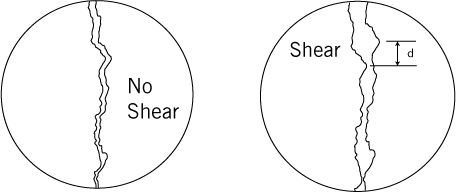There are no perfect houses. Whether you have a new home or one that's a hundred years old, houses have cracks. Houses shift and settle into position after construction.
Houses will have cracks in either the cosmetic finishes or structural components. Most of these cracks have no structural significance. Some are significant and Pillar To Post home inspectors use every technique to help their clients figure out the difference.
Shrinkage Cracks
A newly poured, concrete foundation may contain small cracks because concrete shrinks as it cures. Fortunately, a shrinkage crack in a foundation wall is not structurally significant. Here's how to recognize a shrinkage crack in a poured, concrete foundation:
-
The crack will be small, less than 1/8th of an inch wide.
-
The crack will be vertical.
-
The crack will not extend up through the structure. The crack is in the foundation wall only.
-
Shrinkage cracks usually occur in the middle third of the length of the foundation wall. If the crack is located towards the end of the length of the foundation wall, it's probably not a shrinkage crack.
Settlement Cracks
Foundation settlement cracks are vertical, extending up through the structure. For a brick home, you may see cracks following the mortar joints in the brick wall. In most cases, the settlement crack itself has no structural significance. Rather, we are concerned that the house could continue to settle over time.
Most settlement cracks are the result of short-term settlement. Ongoing settlement is unlikely and uncommon. Unfortunately, it is very difficult to identify ongoing settlement from a one-time visit to the home. Since multiple visits to the home over a few years is not compatible with a real estate transaction, we have to use our experience to 'read the cracks' and take an educated guess as to whether ongoing settlement is likely.
Settlement crack size: A larger settlement crack is more likely to be due to ongoing movement than a smaller settlement crack. While there are no hard and fast rules, a settlement crack or series of settlement cracks that have a sum total opening of less than 1/4 inch are probably not due to ongoing settlement.
Direction of movement: A typical settlement crack is vertical, where the crack opens up. The bumps and crevices line up and fit together like the pieces of a puzzle. If the crack face has moved in any other directions, such as a shear crack, the quarter-inch rule described above does not apply. This can be a significant structural concern.
Repaired and re-cracked: A settlement crack that has been repaired and has re-cracked (not just a hairline crack) also could indicate ongoing movement.
